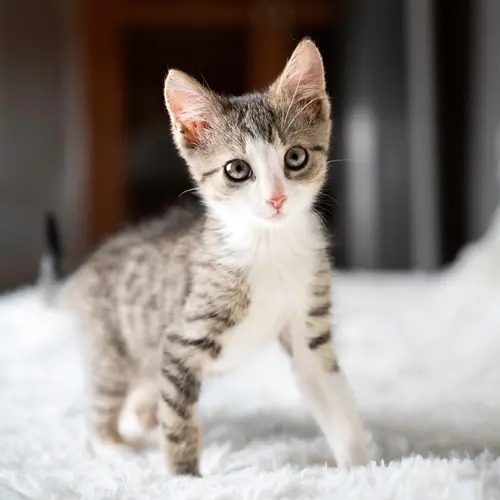What Is Feline Upper Respiratory Infection?
Feline upper respiratory infection is a common illness in cats. It’s similar to a cold, but it can be much more serious. It’s caused by different viruses or bacteria, and it targets the upper airway -- the nose, throat, and sinuses -- rather than the lungs.
Feline Upper Respiratory Infection Symptoms
Symptoms differ depending on the cause and location of the infection, but some common clinical signs of upper respiratory problems in cats include:
Feline Upper Respiratory Infection Causes
By far, viruses are the most common causes of upper respiratory infections in cats. About 80%- 90% of infections are viral, while most of the rest are caused by bacteria. The most common culprits often show up in shelters and multi-cat households:
- Feline herpesvirus. This is related to the virus that causes chickenpox and cold sores in people, but cats can’t give it to their owners.
- Feline calicivirus. This highly contagious virus causes a mild to severe respiratory infection and oral disease.
- Chlamydia. Runny eyes are a typical sign of this bacterial infection.
- Bordetella. This bacterial infection is usually associated with stress and overcrowded living conditions. It’s more common in dogs.
- Fungus. Cats can pick up fungal infections by being exposed to bird droppings and decaying plants.
Viruses are found in the saliva, tears, and nasal secretions of infected cats. They’re easily spread through direct contact, like touching and grooming, or when cats cough and sneeze on each other. Viruses can also live on surfaces cats share, like food and water bowls or litter boxes. People can spread them from one cat to another with contaminated hands or clothing.
Most cats that get feline herpesvirus will carry it for the rest of their lives. They may be able to spread it even if they don’t seem sick. That can include a mother cat with a new litter of kittens.
Feline Upper Respiratory Infection Risk Factors
Upper respiratory infections are common for cats that live in crowded conditions, like shelters or breeding facilities. They’re also more likely in multi-cat households. Other risk factors include:
- Age. Kittens and elderly cats are more likely to get infections.
- Vaccination status. Your cat’s annual vaccines can keep them from getting sick or cause an infection to be milder.
- Physical condition. Cats that have feline leukemia or feline immunodeficiency virus are more likely to get infections. Other illnesses or medications that suppress the immune system can put your cat at risk.
- Stress. It can make a cat more likely to pick up a virus in the first place and cause it to come back later in life.
- Breed. Persians and other flat-faced breeds are more likely to get upper respiratory infections because of their facial structure.
- Going outside. Outdoor cats are more likely to come in contact with infected cats or with fungi that can cause infections.
Feline Upper Respiratory Infection Diagnosis
Take your cat to a veterinarian if you think it has an upper respiratory infection. They can often tell what’s going on by looking at your cat and asking you about its symptoms. They may also recommend certain tests such as:
- Blood tests. These and other lab work can rule out other causes for your cat’s symptoms, including whether they are dehydrated or if there is an electrolyte embalance..
- Eye or mouth swabs. Your vet may grow a culture to see exactly which virus or bacteria is causing the infection.
- X-rays. If your cat keeps getting infections, it may need a chest X-ray to find out what’s going on. An X-ray can also help diagnose a fungal infection.
Feline Upper Respiratory Infection Treatment
The veterinarian will tell you what the best course of treatment is for your cat. This may include medications, isolation, rest, fluids from an IV, and nutritional support. Cats often get a bacterial infection on top of a viral infection, so yours may need antibiotics.
While your cat recovers, you can take steps at home to help it feel better:
- Give it a comfortable, private place to rest.
- Encourage it to eat. A cat with an upper respiratory infection loses some sense of smell, so you may need to tempt your cat with an extra-smelly treat, like fish.
- Gently clean any discharge from its eyes and nose.
- If breathing is a problem, your vet may suggest putting your cat in a bathroom with a steamy shower running.
Use any medications the vet gives you exactly as directed.
If left untreated, some upper respiratory infections can turn into pneumonia or have other serious complications, like blindness or chronic breathing problems.
Feline Upper Respiratory Infection Prevention
- Keep your cat indoors to lower the risk of exposure to infected animals.
- Properly isolate infected cats to protect other pets living in the same environment.
- Minimize stress.
- Keep your cat up to date on vaccines as recommended by your vet. Vaccines for upper respiratory disease in cats may not prevent infection, but they can make one less severe.
- Regular veterinary exams and preventive care can help catch and treat problems early. A cat’s best defense against upper respiratory infection is a healthy immune system.
- Wash your hands thoroughly when handling multiple cats and consider changing clothes..


